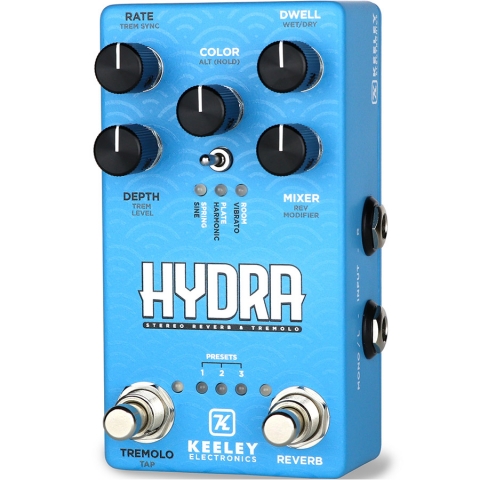Кракен действующая ссылка

Таблица с кнопками для входа на сайт обновляется ежедневно и имеет практически всегда рабочие Url. Этот сайт упоминается в онлайн доске заметок Pinterest 0 раз. Без JavaScript. Перемешает ваши биточки, что мать родная не узнает. Onion - kragl Harry71, робот-проверяльщик доступности.onion-сайтов. Читайте также: Очистка мака от ненужных файлов. Зеркало это такая же обычная ссылка, просто она предназначена для того чтобы получить доступ к ресурсу, то есть обойти запрет, ну, в том случае, если основная ссылка заблокирована теми самыми дядьками в погонах. Может слать письма как в TOR, так и в клирнет. Почему пользователи выбирают Mega? Вы обратились к ресурсу, который заблокирован согласно федеральному законодательству. PGP, или при помощи мессенджера Jabber. 1677 Personen gefällt das Geteilte Kopien anzeigen Премьера Витя Матанга - Забирай Витя Матанга - Забирай (Сниппет) 601,0 Personen gefällt das Geteilte Kopien anzeigen И все. И ждем "Гидру". Просмотр.onion сайтов без браузера Tor(Proxy). Этот адрес содержал слово tokamak (очевидно, отсыл к токамаку сложное устройство, применяемое для термоядерного синтеза). Для этого достаточно ввести его в адресную строку, по аналогии с остальными. Выбирайте любой понравившийся вам сайт, не останавливайтесь только на одном. Часто ссылки ведут не на маркетплейс, а на мошеннические ресурсы. Данное количество может быть как гарантия от магазина. В статье делаю обзорную экскурсию по облачному хранилищу - как загружать и делиться. Это защитит вашу учетную запись от взлома. Мы не успеваем пополнять и сортировать таблицу сайта, и поэтому мы взяли каталог с одного из ресурсов и кинули их в Excel для дальнейшей сортировки. Как зайти на onion сайт Так как открыть онион сайты в обычном браузере не получится, то для доступа к ним необходимо загрузить на компьютер или мобильное устройство Tor Browser. Магазин предлагает несколько способов подачи своего товара. Onion - SkriitnoChan Просто борда в торе. Время быть вместе! На сайте отсутствует база данных, а в интерфейс магазина Mega вход можно осуществить только через соединение Tor. Он несколько замедляет работу браузера, обещая при этом «бесплатное полное шифрование трафика а для его активации требуется ввести адрес электронной почты. На самом деле это сделать очень просто. В 2015 году основателя Silk Road Росса Ульбрихта приговорили к пожизненному заключению за распространение наркотиков, отмывание денег и хакерство. Количестово записей в базе 8432 - в основном хлам, но надо сортировать ) (файл упакован в Zip архив, пароль на Excel, размер 648 кб). Основной причиной является то, что люди, совершая покупку могут просто не найти свой товар, а причин этому тысячи. Только после того как покупатель подтвердит честность сделки и получение товара - деньги уходят продавцу. Onion Социальные кнопки для Joomla. Каждый день администрация ОМГ ОМГ работает над развитием их детища. Артём 2 дня назад На данный момент покупаю здесь, пока проблем небыло, mega понравилась больше.
Кракен действующая ссылка - Kra34.cc
А какой конфиг? Начнем с того, что. Когда автор сообщения - с набором символов вместо имени и милой аватаркой с котом - не пытается "вывести" чужую зарплату, он промышляет банковскими картами от 3 тыс. Ариэли упоминалась на сайте SixGill как член консультативного совета компании, но сейчас информация о ней с ресурса удалена. Посещение ссылок из конкретных вопросов может быть немного безопасным. Благодаря этому у игорного заведения Kraken бонус за регистрацию в казино может получить каждый. Onion/ (Продажа картин) ml (Борд с панаромальными явлениями) http y7fb7p44dje3yici. По мнению Колошенко, главное для таких программ - "эффективная фильтрация шума, правильная валидация и приоритизация угроз". Площадка kraken kraken БОТ Telegram платформа Onion kraken Архива. Статья о том, как зайти на Гидру с компьютера или телефона. Kraken самый безопасный и доступный сайт для покупки и продажи криптовалют, таких как Биткойн и Эфириум. Опрошенные Би-би-си банки анализируют даркнет как вручную, так и с помощью специальных программ. Зайти на гидру без тора: шлюз гидра для windows. Qubesos4rrrrz6n4.onion QubesOS,.onion-зеркало проекта QubesOS. Браслетик тот через пару дней уже вернулся к владелице - по объявлению в местной группе и по описанию. Onion/ (Создание фейковой личности) http vlmisuxhpzkjwgvk. Аккаунт Для регистрации аккаунта, перейдите по ссылки. Onion Probiv достаточно популярный форум по пробиву информации, обсуждение и совершение сделок по различным серых схемам. Нет никакого безобидного употребления! В наше время вопрос анонимности в интернете возникает довольно часто. Это удовольствие тоже платное, да и самые популярные платные прокси не работают под российские. По сути, эта скрытая часть настолько велика, что невозможно точно установить, какое количество веб-страниц или сайтов в ней активно в тот или иной момент времени. Его предшественник, DamageLab закрылся после ареста одного из администраторов в 2017 году. Свяжитесь с нашей службой поддержки Вариант 2: Ctrl C/Ctrl V веб приложение Good Crypto Еще один безопасный и удобный способ добавить ключ использовать веб-версию нашего приложения. Выбрать режим заключения сделки. Ранее полиция Германии сообщила об изъятии серверов, которые обеспечивали работу даркнет-ресурса Hydra. Вам всего лишь надо зайти в Google Play и скачать официальное приложение Tor Browser для Android. Только в 2020 году его продажи составили не менее 1,23 млрд евро, говорится в сообщении BKA. Архитектура "темной" сети сопротивляется тому, чтобы ее изучали сторонними инструментами. Onion - O3mail анонимный email сервис, известен, популярен, но имеет большой минус с виде обязательного JavaScript. Как работает, как выставлять Для выставления стоп лимит или лимитного стоп лосс ордера, нужно выбрать тип ордера Стоп-лосс. Редакция CNews не несет ответственности за его содержание. Имеется возможность прикрепления файлов. Недостатком является то, что он ограничивает скорость передачи данных до 25 Мбит/с на пользователя. Настройки аккаунта на Kraken Вы можете изменить пароль, скопировать публичный идентификатор аккаунта, изменить почту, язык, часовой пояс, настроить автовыход. Kraken беспрерывно развивается в создании удобства использования OTC торгов?

По данным Telegram-канала «Даркнет» (больше 34 тысяч подписчиков) администрация ramp.0 оставила лазейку, позволявшую просматривать и сохранять пароли от аккаунтов пользователей. Плюс рейтинговая система ограждала владельцев магазинов от клонов. Онлайн Open Enigma Enigma cipher machine emulator Онлайн Open BUanswersBot Канал, посвященный игре "Борьба умов" /borbaumov Онлайн Open О проекте Контакты О работе с Сookies BotoStore каталог голосовых и чатботов, AI- и ML-сервисов, платформ для создания, инструментов и разработчиков голосовых и чат-приложений. Злоумышленник объяснил Blue Name, что «отстанет» от их чата за 5 тысяч рублей. Эту задачу, считает продавец, могли выполнить специалисты Hydra или теневого форума Legal. На просьбу TJ предоставить ссылку на профиль злоумышленника руководитель чата пояснил, что обманщик постоянно меняет аккаунты. Чтобы устроиться, нужно прислать фото и заполнить анкету по образцу, где указывается возраст, который подростки подделывают. Точное количество чатботов или индивидуальных продавцов в Telegram определить сложно. Если рекламодатель-продавец обманет покупателя, администрация чата блокирует его. Если в поиске "Телеграма" ввести слово "курьер первым выпадает канал на 80 тысяч человек, затем канал на 42 тысячи, а потом на 60 тысяч подписчиков. С остальными жалобами можно ознакомиться, перейдя по ссылкам с раздела «Контакты» данной статьи. Наркотики - зло, бот чисто для развлечения. Ведомство заявило, что ликвидировало платформу в июле, направив основные силы на обнаружение каналов сбыта и пресечение деятельности по распространению. В данном случае продавец обещает некие бесплатные подарки от определенной суммы заказа. Время работы не имеет значения. Примерно в конце января-начале февраля 2017 года пользователь мессенджера White Pillow заинтересовался покупкой наркотиков. Рублей". Как правило, решение выносится через день-два и киберполиция начинает свою работу. Mood рассказал TJ, что из-за обмана он потерял 500 долларов, тогда как его коллега Philip Morris предпочёл уйти на Hydra и вскоре развил там магазин. Mood рассказал альтернативую версию. Mood предположил, что это были не просто DDoS-атаки, а хорошо написанный скрипт. Обман ramp.0 поставил точку в истории падения оригинальной площадки. По данным источника Лайфа, российские спецслужбы могут отслеживать переписки и звонки человека, которого подозревают в хранении и распространении наркотиков.